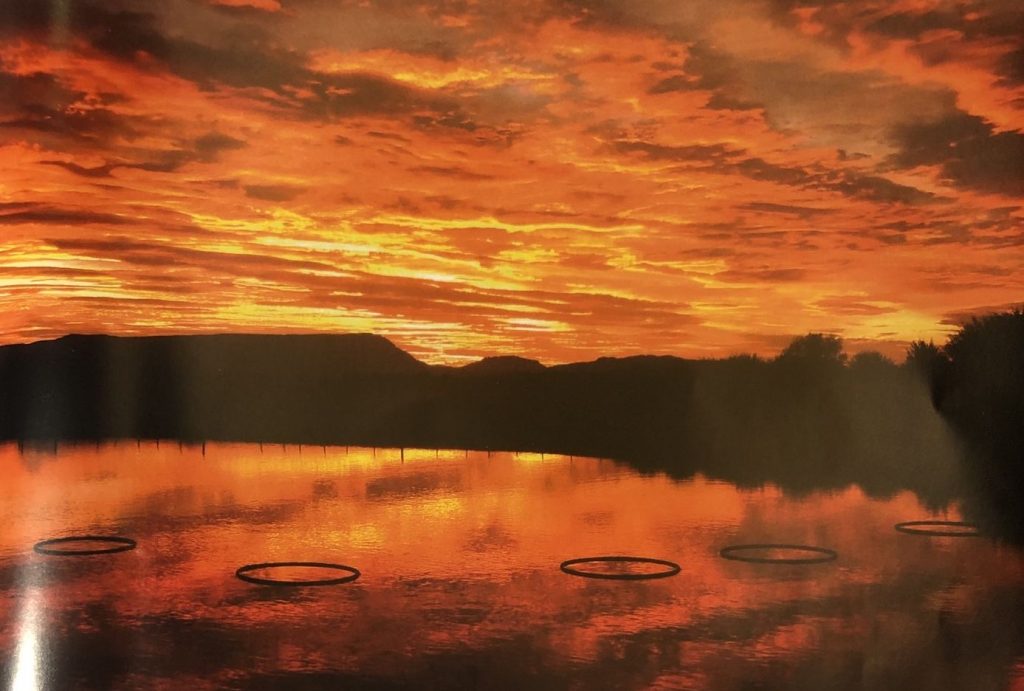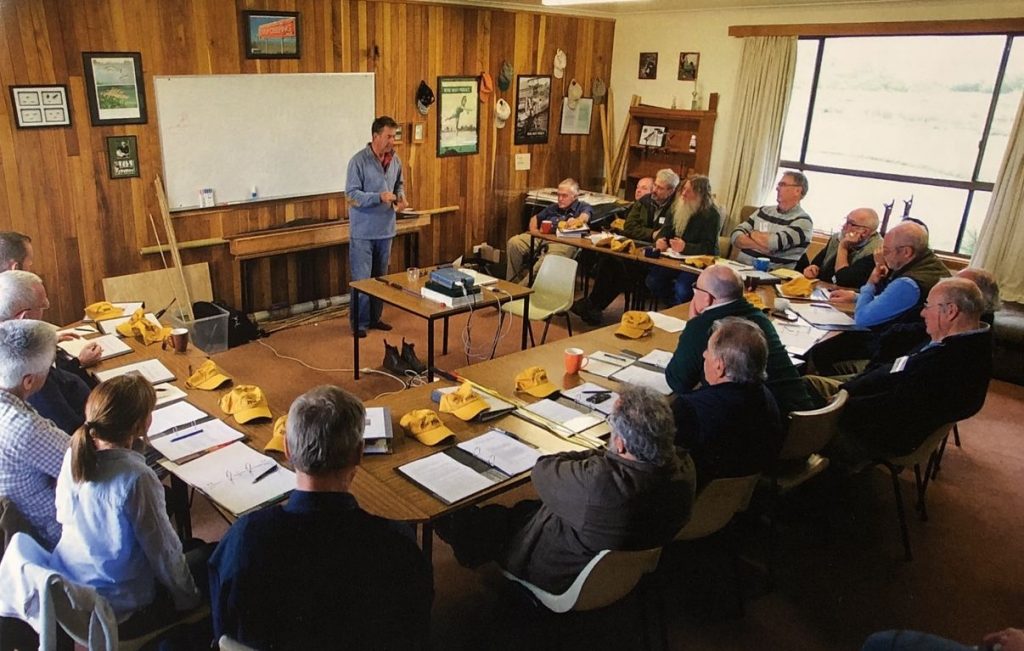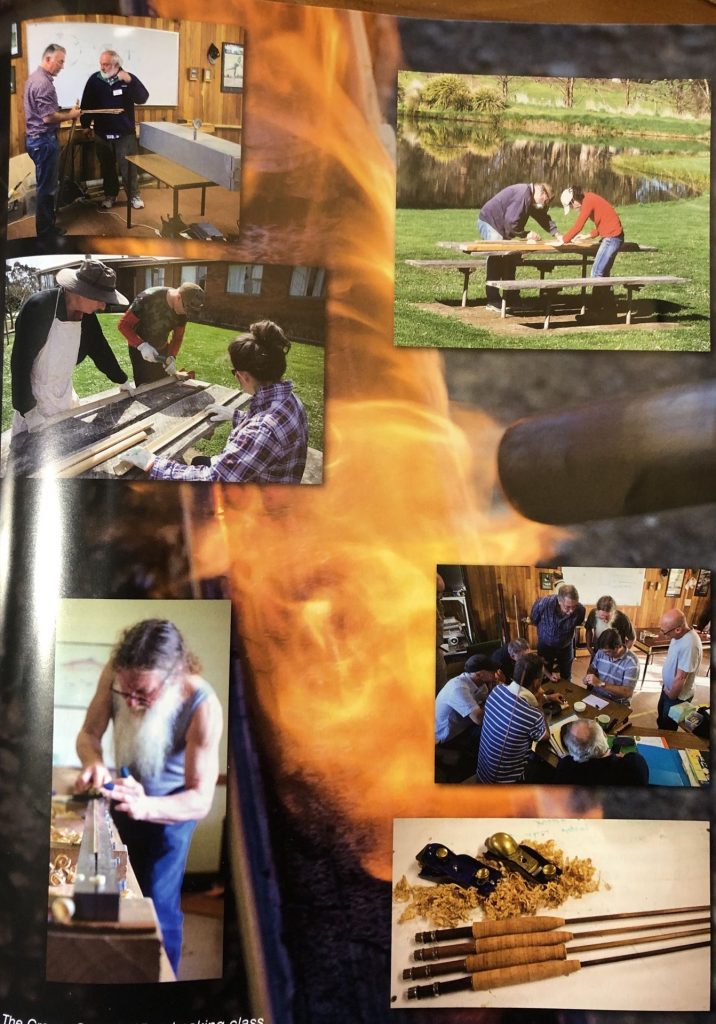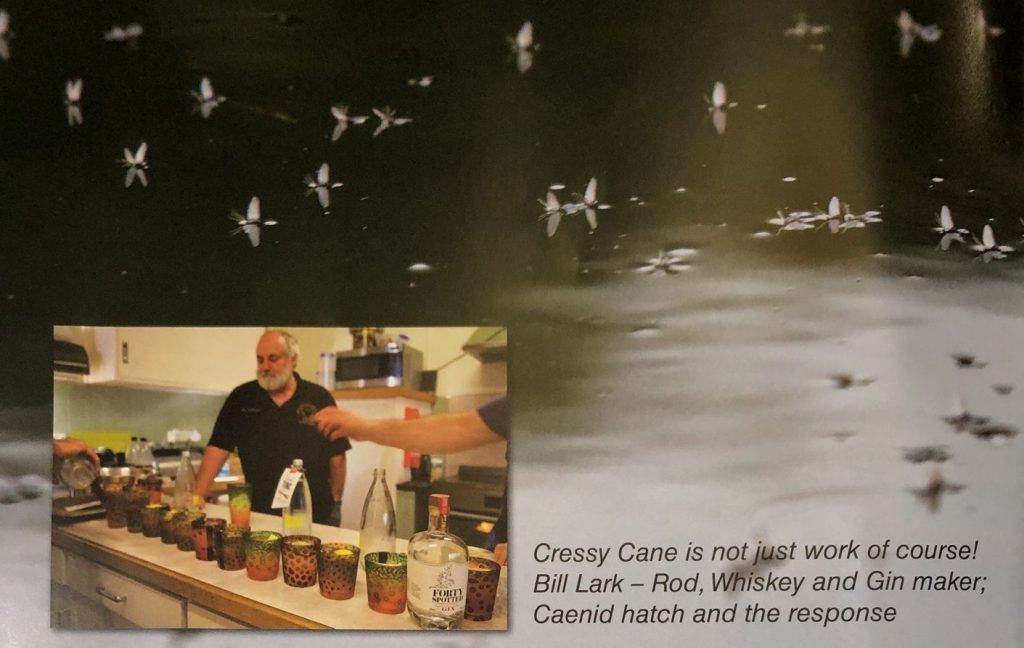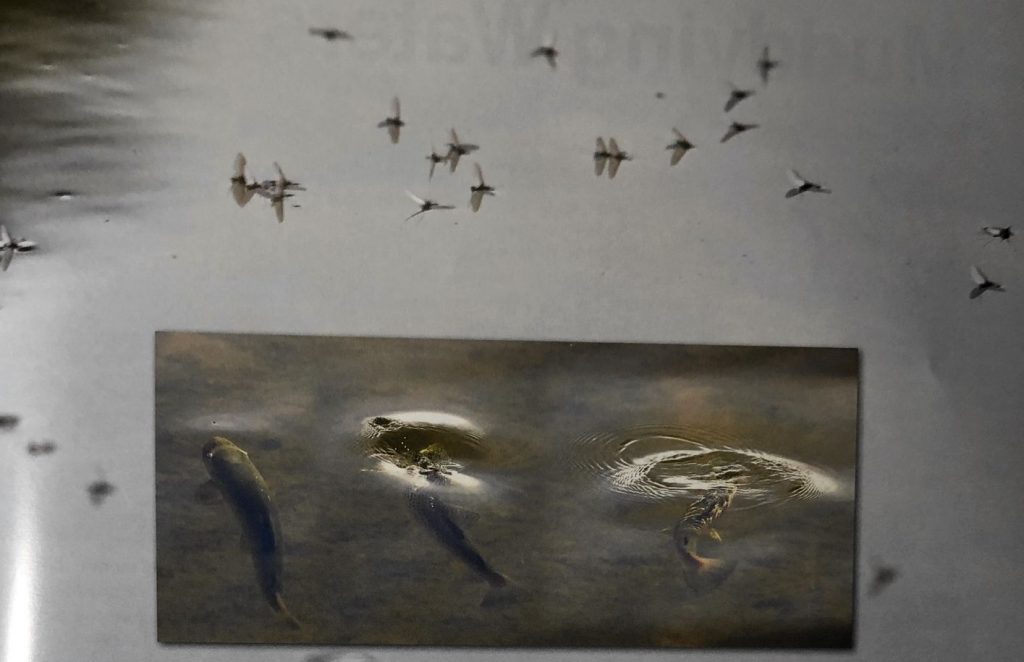By Nick Tarausky
It’s hard to believe that it’s already been more than 5 years since my fellow bamboo rodmaker, David “Bamboo” Hemmings told me that he was thinking of holding a weekend bamboo rodmakers gathering in Tasmania. It sounded like a great idea, particularly as he was the one organising it, so in October 2014, thanks to much hard work by David, and others, the first Cressy Cane was held at Peter Hayes’ lodge on Brumby’s Creek at Cressy. When I look back, I’m amazed at how far we have come, and even more excited about the future.
Background
When I quit my safe grown-up’s IT job back in 2004 to become a full time bamboo rodmaker in Australia, most people (including myself) thought I was more than a little crazy. There were a few other guys making really nice rods, for love more than money, but at best our community could have been called “fledgling”. Over the following 10 years, bamboo rodmaking, and acceptance of bamboo rods in general, showed a slow, but steady growth.
During that time, partly to promote my own business, but more so because I loved making and fishing bamboo rods, I was a bit of a bamboo evangelist. I was happy to give a workshop tour and overview of the rodmaking process to anyone who showed an interest. I did take on several students on a one-on-one basis, but I wasn’t really setup to teach rodmaking. Anyone who wanted a structured introduction I referred onto my own teacher, Jeff Wagner, in the USA. Before long, Jeff mentioned to me that he’d had eight Aussie students attend his classes. In parallel with that, quite a few other people had learnt on their own, which to me is quite a feat of initiative. It seemed this disease was contagious!
One of Jeff’s students was David Hemmings, who also did some drift boat guiding work for Peter Hayes. David returned from his class in the USA seriously bitten by the bamboo bug, and the combination of his passion for both sharing and ongoing learning, and access to a perfect venue at Hayesies lodge, lead to the first Cressy Cane in 2014.
Why Bamboo?
Hopefully I’ve moved from the wild-eyed evangelist stage to more of an ambassadorial position when it comes to bamboo, but it is worth looking at the question of “why bamboo”? The natural beauty of bamboo, or its connection with tradition are a couple that people think of to start with, but for many of us, these have little to do with our passion for bamboo. The fishing properties of a quality bamboo rod (as opposed to many of the heavy old clunkers that sadly gave bamboo a bad name for a long time) are incredible. Taking the extra step of making your own rod, like tying your own flies, is a rewarding craft of its own. On top of that, you have the freedom to make whatever rod you want, either out of curiosity, or for many of us, to make a rod to suit our own specific fishing requirements. For me personally, as a small stream, dry fly, sight fisherman, short, medium fast action (whatever that means) rods became my obsession for the first 15 years of my rodmaking.
Cressy Cane 2014
So, these reasons, and probably more, attracted close to 30 people to the first Cressy Cane in 2014, held over three days. Around half the attendees had made a rod, or were in the process of getting started, while others just had an interest in fishing bamboo and learning more. We covered a range of topics over three days, with a mixture of classroom talks, practical hands on rodmaking, and of course, with leading casting instructor, Peter Hayes as host, spent a lot of time casting and really seeing what these rods were capable of.
Cressy Cane Sunset;
Peter Hayes with the 2014 course
The social aspect and Jen Girvan’s sensational cooking topped of a wonderful experience. The weekend was a fantastic success, and the final wind up session made it clear that there was an overwhelming demand for a Cressy Cane in 2015.
Cressy Cane 2015
Something that came out of the 2014 event was a desire for some sort of “rodmaking class” (similar to the classes run by Jeff Wagner that many of us had attended), for those who were keen to get started, but were a little daunted. I’d been planning to run these sort of classes for a while, so for the three weeks leading into the 2015 gathering, I ran some live-in classes at Hayesie’s lodge. I can say without a doubt that it was the highlight of my year. I learnt a huge amount myself about rodmaking and teaching, and I think all of the students did incredible work in making their first rod. The classes have continued since then each year as a lead in to Cressy Cane and I’m stoked to think that I’ve helped close to forty people get into rodmaking. A few have just enjoyed it as a one off experience, but many have continued on in rodmaking.
Aside from my classes, what really was astonishing to me at the 2015 event was how far the standard and output of rodmaking had come in just 12 months. Far from being “keeping a dying craft alive”, we had to limit the numbers to around 30 to keep the intimate feel of the event, where everyone could participate and interact as a single group.
The overall structure of the event was the same, with a mix of talks, hands on demonstrations, and plenty of casting. To me, having Hayesie as host and leading the casting has probably been the biggest factor why we have collectively come so far, so quickly as rodmakers. It’s been amazing to see the improvement in the standard of casting over the 5 years. This has flowed through into people’s ability to analyse rod tapers, and lead to a vastly accelerated development of new tapers and construction methods.
Cressy Cane 2016
At the end of the 2015 gathering, we could see that this was going to be an annual event and the format in general was working. With quite a few of us having learnt initially from Jeff Wagner, we decided to invite him out from the USA to be our first international guest. What a fantastic idea that turned out to be! His incredible talent as a rodmaker and teacher is only surpassed by his humility (and possibly his wicked sense of humour). For those of us who already knew him, it was great to see him again, and for all of us, his presentations and involvement were an inspiration. If Jeff’s rods are exquisite, his recent project – handcrafted small batch reels – are out of this world. I am lucky enough to have one, and it’s far and away the nicest thing I own.
Jeff was able to stay on for a couple of weeks after Cressy cane to sample the fishing, both in Tasmania and on the Mainland. Inevitably, he also got to experience some particularly vile weather, but we did manage some good fishing (and even catching) in between! A highlight was his first taste of Australian fishing, at Four Springs Dam. Hayesie rowed us across the lake in driving sleet, but in a small window of calm weather, he found a nice brown sipping duns hard against the bank. Easing the boat into position, he calmly guided Jeff to cast to the right spot. Second cast, up came the snout, and Jeff was hooked into his first Australian trout. As he played it, the clouds parted to beam down a ray of sunshine, and a kangaroo hopped out from behind a tree on the bank – another first – Jeff had never seen a kangaroo before! It was almost too perfect to be true. What made it even more special was that during Cressy Cane, Michael Youl had visited and spent some time with Jeff. Michael is the great-great grandson of Sir James Arndell Youl, who brought the first trout to Australia in 1864.
Cressy Cane 2017
Having Jeff visit had been a success on both a personal level and a technical one. As a group we decided that inviting an international guest every second year would be a good fit. We could use the alternating year delve deeper into technical areas.
The focus for 2017 was “tapers, taper tapers”. While still covering a range of topics, we spent a lot of time looking at the detailed aspects of rod tapers, including analysing stress curves with software. At times it was almost like being back at University, but it was a really worthwhile exercise in creating a framework for understanding tapers, their adjustment and the development of rod actions.
By now we had a large group of rodmakers with a solid grounding of technique and a lot of rods under our belts, so as a follow on to all of the discussion on tapers, we took on a “rod comparison project” to work on for the following year’s get together. The plan was for each maker to choose one of two classic American tapers, the full actioned 7’6″ #4/5 “semi parabolic” Paul Young Perfectionist or the faster. stouter 7’6″ #5 Lyle Dickerson 7613. Some people would make the “faithful” original version of these rods (two piece, varnished with Nickel Silver ferrules), while others would make a version with a change. We had all sorts of variations, including 1-piece, 3-piece, 4-piece, bamboo ferrules, glass ferrules. scarf joints, hollow built, different heat treating, different species of bamboo (Madake instead of Tonkin Cane), as well as modifications to the original documented taper. With a year to make these alternatives, some people took on several different versions! It seemed like an ambitious project but we were all eager to see what we would learn.
Cressy Cane 2018
Twelve months seems to fly by for me at the blink of an eye these days, so it seemed like no time at all before the 2018 gathering came around. We had our second international guest at the 2018 event – Bob Clay, from British Columbia. I’d met Bob during my 2016 visit to Canada, when I attended the Corbett Lake Rodmakers Gathering in Kamloops, and was astonished by the feel and responsiveness of his hollow built, two handed steelhead rods. Bob shared a huge amount of information with us, on bamboo Spey rods, hollow building in general as well as a mouth watering talk on his home steelhead fishery of the Skeena
catchment. Hollow building and longer rods have been of particular interest to me lately, as my big news is that Miri has decided 35 years in Australia is long enough, so she is heading home to New Zealand, and she is letting me come with her! So I will be fishing new and larger waters, and will be looking at rods to suit. But that’s a story for another day!
As well as Bob’s feature presentations, general assistance (and another great sense of humour), we all fronted up with our rods for the comparison project. It was a little overwhelming to try to compare so many options, but the project was a big success on a number of levels. Firstly, they were all really nice rods to cast – there were no bad ones that I can recall. Secondly, when people made a faithful version of the original rod, they were much more similar than they were different (which is what you would hope for I suppose), even with minor differences in heat treating or adhesives etc. Even when a different version was made, the rods still retained the essence of the original taper (again, what you might hope for But equally, the differences were noticeable where intended. There was lots of debate over favourites, being a personal thing. And there were some interesting stand outs to me (not necessarily better, but food for thought) including the hollow built rods from Mark Rampant and Jim Morris’ glass ferruled rods. One rod that nearly everyone rated as a favourite or near favourite was David Hemmings’ Dickerson 7613, made with low modulus Madake bamboo, and scarf ferrules. To me this was an unexpected result – a fast actioned rod, with a slow action material. Fascinating, and aside from all of the other benefits, made the whole project worthwhile for this rod alone.
Like Jeff Wagner, having travelled half way around the world, Bob Clay stayed on to sample some Tasmanian fishing. We had a great time with him and I think the Tasmanian sight fishing was something very interesting and new to him.
The future…
Our next Cressy Cane will feature Japanese mater craftsman and angler, Naoto Shibuya. His rods and fishing style are renowned for super accurate slack line presentations of dry flies on leaders up to 22 feet, with screaming line speed, of deep loading rods. I’ve visited him three times in Japan, to learn more about both his fishing and rodmaking. To have him come to Australia is something really special. To line up with the Japanese schedule and season, the event will be sometime in April 2020 – a little outside the normal October time frame.
Aside from the Japanese visit, we have plans down the track to invite other international makers, possibly next time from Europe. We’ll also be continuing with annual rod projects for people to work on for a year and bring to the following event. We do want to keep the event at around the 30 person mark for attendees to keep the same interactive environment that we’ve established. I’m sure however that we could find room for some attendees from New Zealand – so calling any Kiwi rodmakers – please drop us a line! There is more information on Cressy Cane (including details and photos from previous gatherings) at the website: http://www.cressycane.org/
Once I’m established in New Zealand too, I’d be interested to organise a get together of Kiwi rodmakers, and also run some rodmaking classes too if there is any interest – who knows, you guys might be too busy out catching fish!
